Most American .38 cartridges can be traced to Colt’s Belt Pistol, a .36-caliber percussion revolver that collectors commonly call the Model 1851 Navy. How did .36 get translated to .38? In those days, firearms manufacturers were fond of designating caliber by a barrel’s land diameter instead of its groove diameter. Nominal groove diameter for a .36 “Navy” was .375 inch.

Loads for Classic Revolver Cartridges
With the advent of cartridge revolvers, private gunsmiths and firearms factories set about to convert many percussion revolvers to fire metallic ammunition in both center fire and rim fire forms. (We are only concerned with centerfires here.) Included were thousands of Colt and other brands of .36s. At that point in cartridge development, bullets were designed to have a reduced diameter shank to fit inside cartridge cases. The full diameter of the rest of the bullet was the same size as the outside of the cartridge case. To anyone confused by this description, just look at a round of modern .22 LR.
For this system to work in .36-caliber percussion revolver barrels, a bullet’s full diameter needed to be at, or in excess of, .375 inch. According to U.S. Cartridges and Their Handguns 1795-1975 (1977) by Charles R. Suydam, original rounds of .38 Colt heelbase factory loads carried bullets from .378 inch to .381 inch in diameter. Hence the .38 moniker; to put things simply, when a .36-caliber cap-and-ball revolver was converted, it then became a .38 cartridge revolver.
Modern shooters and handloaders must be scratching their heads right now, thinking, But our .38s today use .357-inch bullets. They do, but anyone who has slugged the barrel of a .38 Colt 1877 DA “Lightning” or .38 Colt U.S. Model 1892 knows they still measured in the vicinity of .375 inch. By 1892, however, some cartridge designer realized that the heyday of heel-base bullets in centerfire cartridges was over. Rounds like .45 Colt, .45 S&W and .44 S&W Russian, to name only three, had been using bullets of the same diameter as the inside of respective cartridge cases for decades.
Diese Geschichte stammt aus der August - September 2017-Ausgabe von Handloader.
Starten Sie Ihre 7-tägige kostenlose Testversion von Magzter GOLD, um auf Tausende kuratierte Premium-Storys sowie über 8.000 Zeitschriften und Zeitungen zuzugreifen.
Bereits Abonnent ? Anmelden
Diese Geschichte stammt aus der August - September 2017-Ausgabe von Handloader.
Starten Sie Ihre 7-tägige kostenlose Testversion von Magzter GOLD, um auf Tausende kuratierte Premium-Storys sowie über 8.000 Zeitschriften und Zeitungen zuzugreifen.
Bereits Abonnent? Anmelden

OEHLER's New System 89 Chronograph
Measuring Bullet Performance Downrange
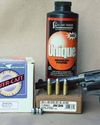
The Problem with Low Pressure Loads
Bullets & Brass
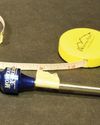
Measurements for Rifle Handloading
Handy Techniques for Accurate Ammunition
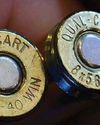
THE BRASS RING
In Range
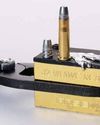
Semi-custom Bullet Moulds
Mike's Shoot in' Shack
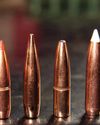
REVISITING THE 6.5 -06 A-SQUARE
Loading New Bullets and Powders
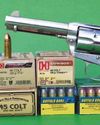
Cimarron Stainless Frontier .45 Colt
From the Hip
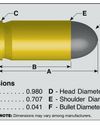
9x18mm Makarov
Cartridge Board
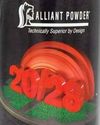
Alliant 20/28
Propellant Profiles
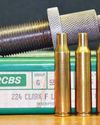
.224 Clark
Wildcat Cartridges